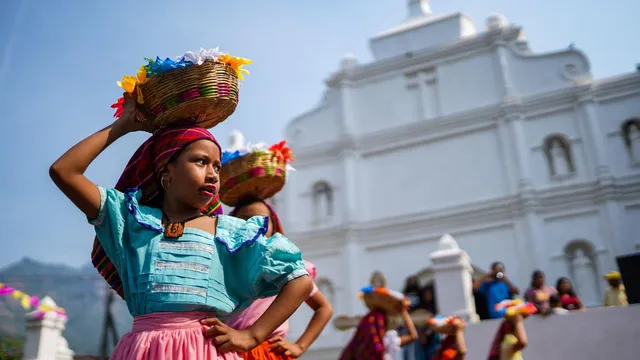
El Salvador sees 98 percent drop in homicides post-violence crackdown
2025-07-05 04:00- El Salvador has transitioned from an era of extreme gang violence to improved safety for potential tourists, with a historical context of civil war and rampant crime.
- President Nayib Bukele's state of emergency in March 2022 resulted in mass arrests and significant human rights concerns, yet has led to a drastic decrease in homicide rates.
- The country's recent decline in crime has allowed for a burgeoning tourism sector, inviting visitors to explore its unique attractions and engage with local communities.
Express your sentiment!
Insights
El Salvador has witnessed a significant transformation in its security landscape, moving from being terrorized by gang violence to becoming a more tourist-friendly country. Historically plagued by brutal civil war and gang activity, the nation declared a state of emergency in March 2022 under President Nayib Bukele. This led to the controversial mass arrest of individuals suspected of gang affiliation. Critically, a 2024 Amnesty International report indicated a myriad of human rights violations that arose from this campaign, including arbitrary detentions and poor prison conditions, with many individuals wrongfully accused. Nevertheless, government statistics highlight a staggering 98 percent reduction in homicides since 2015, creating a newfound sense of safety for residents and attracting tourists as travel advisories from countries like the UK and US are lifted. Consequently, this newfound stability and safety have enabled the tourism sector to develop and flourish in El Salvador. In addition to enhancing security measures, the country's tourism offerings have expanded significantly, competing with larger neighbors such as Guatemala and Honduras. Landscape features like cascading waterfalls, coffee plantations, and notable hikes await visitors, alongside rich cultural experiences steeped in pre-Hispanic history, such as the site of Joya de Ceren, a UNESCO World Heritage site. Travelers can now explore the appeal of El Salvador through various attractions beyond its tragic past marked by violence and hardship. While exploring the country, visitors can engage with local communities and share stories that underline the ongoing challenges faced by families affected by gang violence. For example, the story of Maria Puro, a mother who tirelessly searched for her kidnapped son, exemplifies personal tragedies amidst El Salvador's ongoing recovery journey. Despite lingering doubts about ethical tourism that aims to shed light on the painful histories of residents, the sense of empowerment and support that arises from sharing these stories contributes to a journey marked by resilience and hope. The overall improvement in safety and evolving tourism landscape grants visitors the ability to explore El Salvador's charms without the fear that once dominated the narrative surrounding the nation. As crime rates have substantially dropped, the global perspective towards El Salvador is gradually transforming, setting the stage for a new chapter that embraces both adventure and cultural richness.
Contexts
Gang violence in El Salvador has a deep-rooted history that traces back several decades, influenced significantly by social, political, and economic factors. This violence escalated during the Salvadoran Civil War (1980-1992), which resulted in the displacement of a large part of the population and forged social divisions. Following the war, many former combatants became involved in criminal activities, exacerbating gang formation as they sought alternative means of survival. The most notorious gangs, Mara Salvatrucha (MS-13) and Barrio 18, emerged from these conditions and grew increasingly powerful, engaging in drug trafficking, extortion, and murder, thereby causing widespread fear across the country. The government’s response to gang violence has been met with controversy, often leading to human rights violations and a vicious cycle of retaliation and social unrest. The 1990s and early 2000s saw attempts at addressing gang violence through various strategies, including the Mano Dura (Iron Fist) initiative, which focused on heavy-handed law enforcement. However, these measures often resulted in further marginalization of youth and did little to resolve the core issues driving gang affiliation such as poverty, lack of education, and limited job opportunities. Consequently, the appeals for more comprehensive solutions became increasingly urgent, as many communities felt trapped in a relentless cycle of gang influence and violence. Furthermore, the gang’s territorial control has turned entire neighborhoods into no-go zones, significantly affecting the daily lives of innocent civilians. The international community has recognized the dire situation in El Salvador, prompting various interventions aimed at improving security and addressing systemic issues. Programs focused on social rehabilitation, education, and employment opportunities have gained traction, targeting youth at risk of joining gangs. Efforts by NGOs and governmental organizations have sought to provide necessary resources for communities, aiming to undermine gang recruitment tactics that preys on vulnerable populations. Nevertheless, the persistence of gang violence reflects not solely a criminal issue but one intertwined with broader socio-economic challenges that require sustained attention and investment. In recent years, El Salvador’s governance and policy approaches toward gang violence have faced heightened scrutiny, particularly concerning the balance between tough anti-gang measures and respect for human rights. The ongoing debate hinges on finding effective equilibrium between security and rehabilitation. A key component of any successful strategy will need to involve community engagement and partnerships, ensuring that long-term solutions are crafted in a manner that empowers locals rather than further alienating them. Understanding the historical context and ongoing dynamics of gang violence is crucial, as El Salvador strives for a stable future free from the grip of gangs, fostering a society where safety, opportunity, and dignity can flourish.